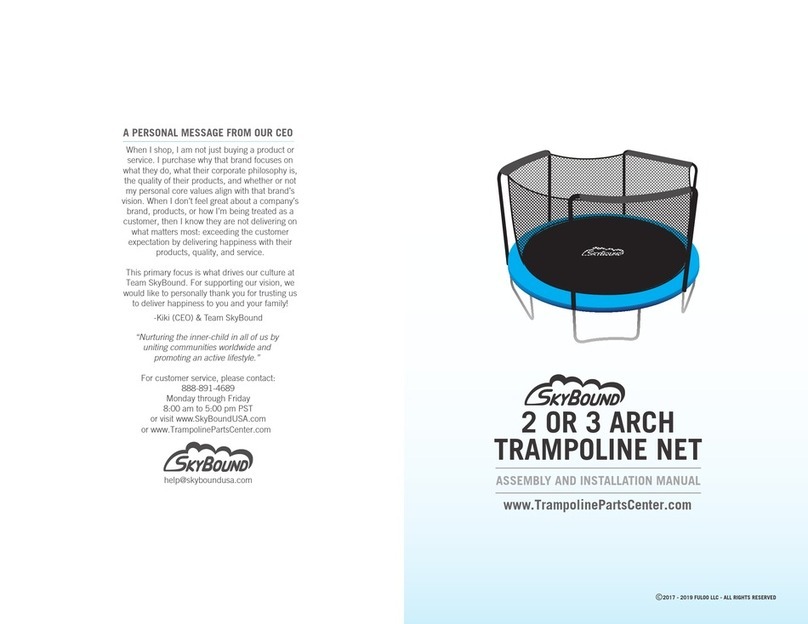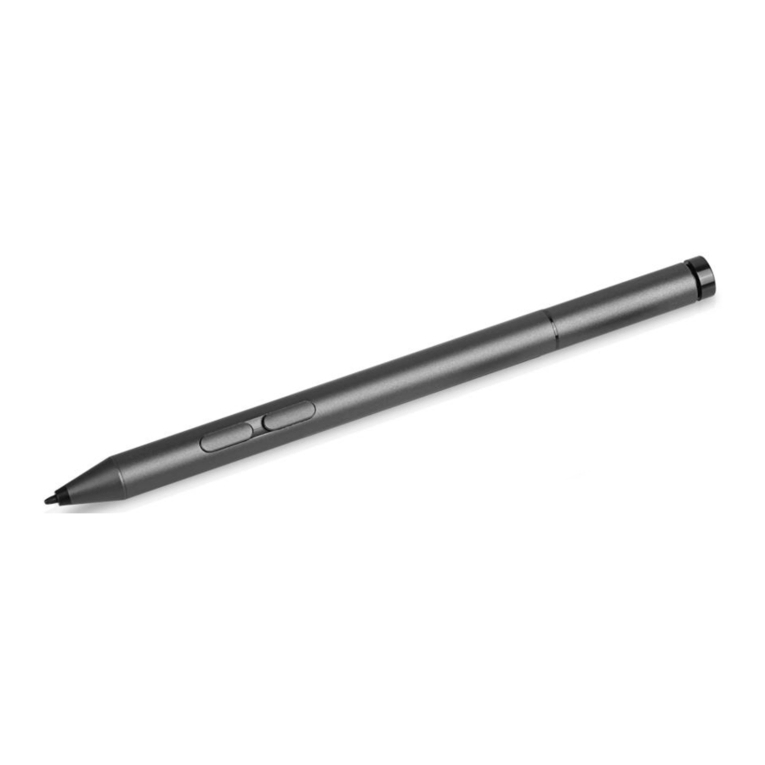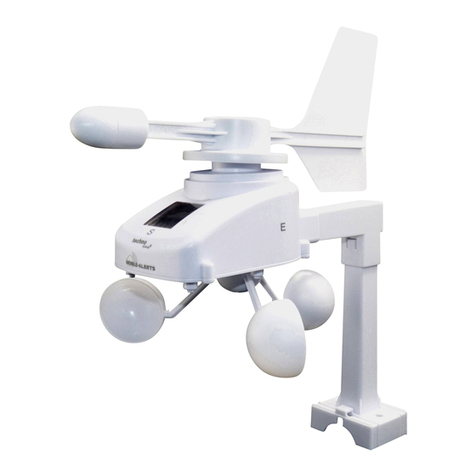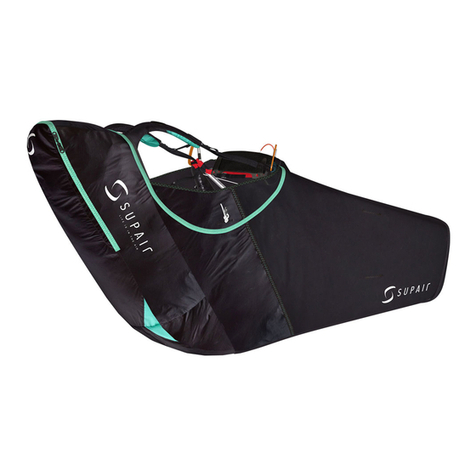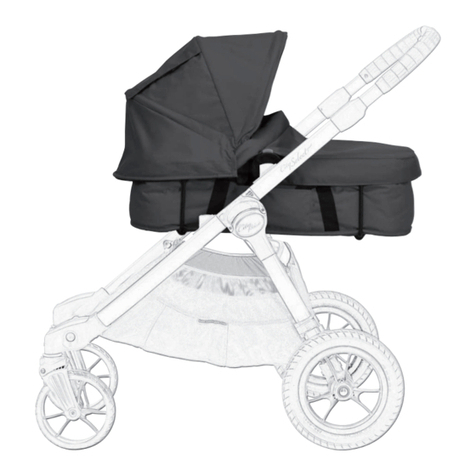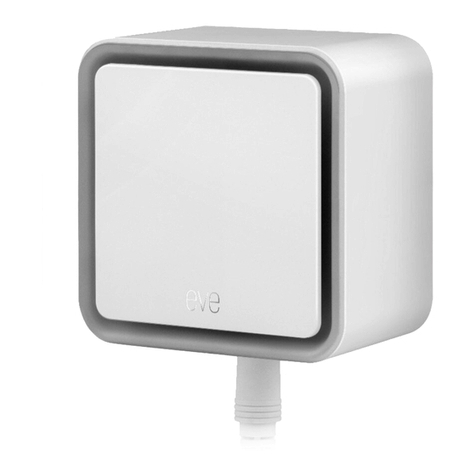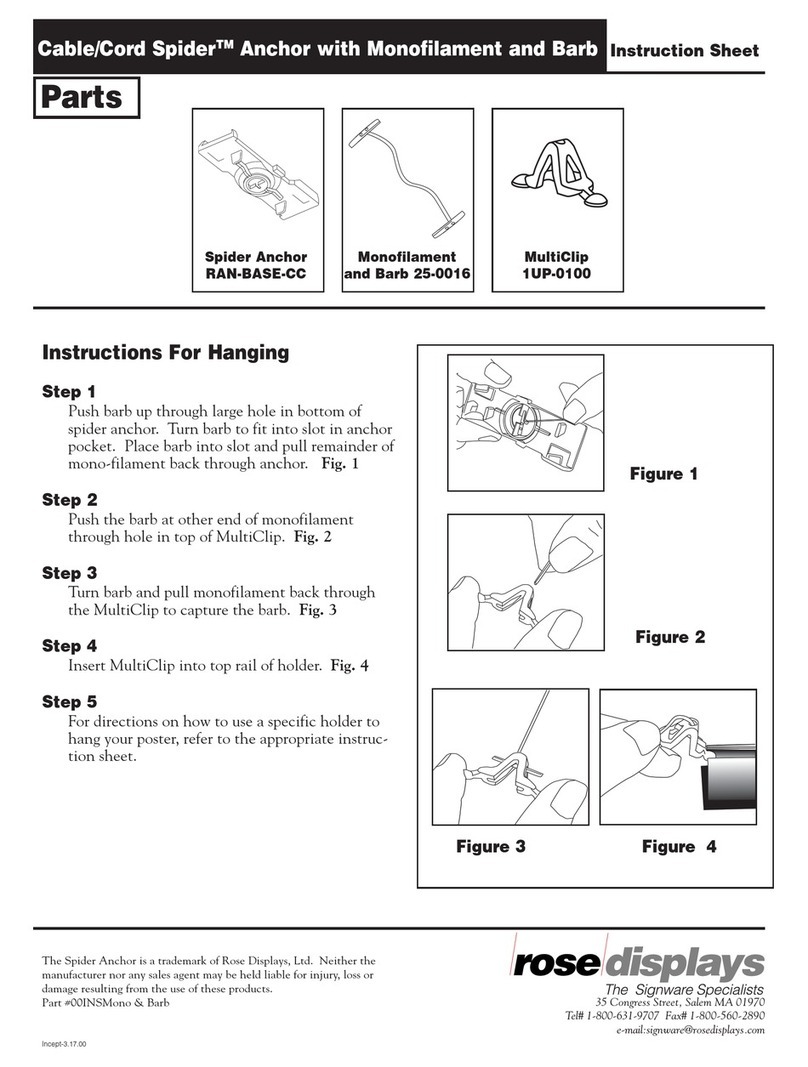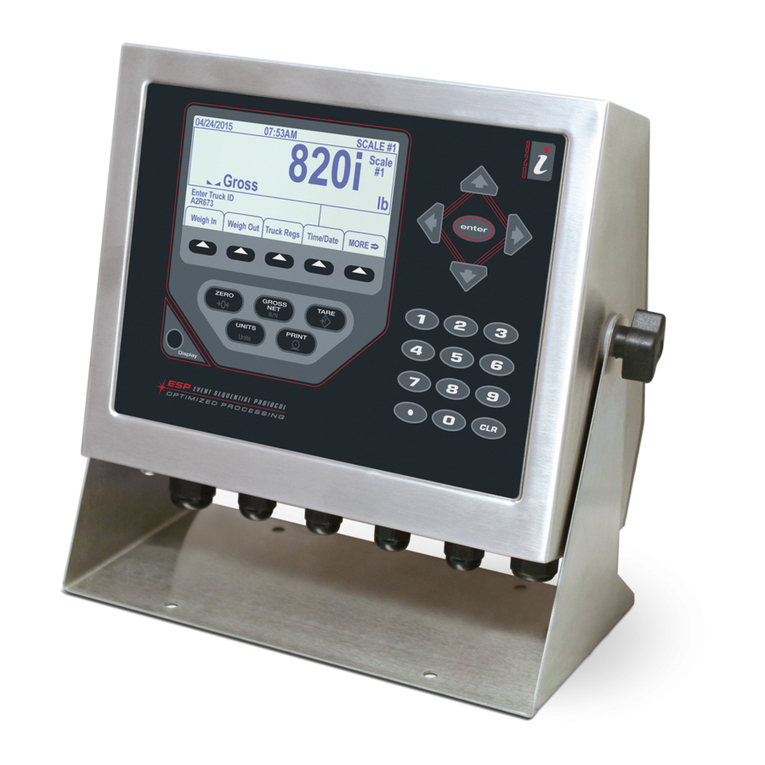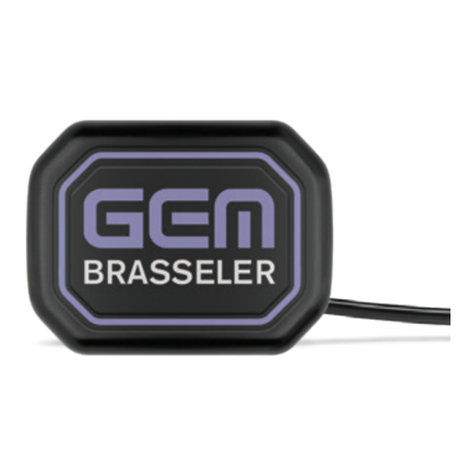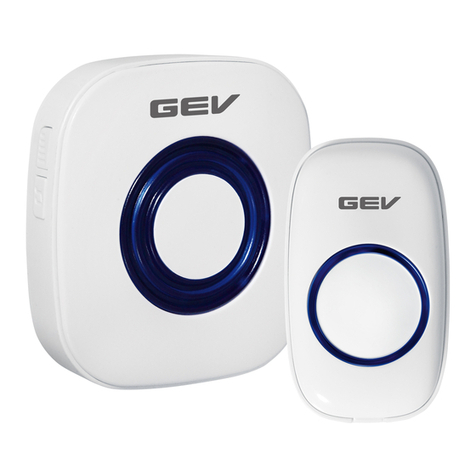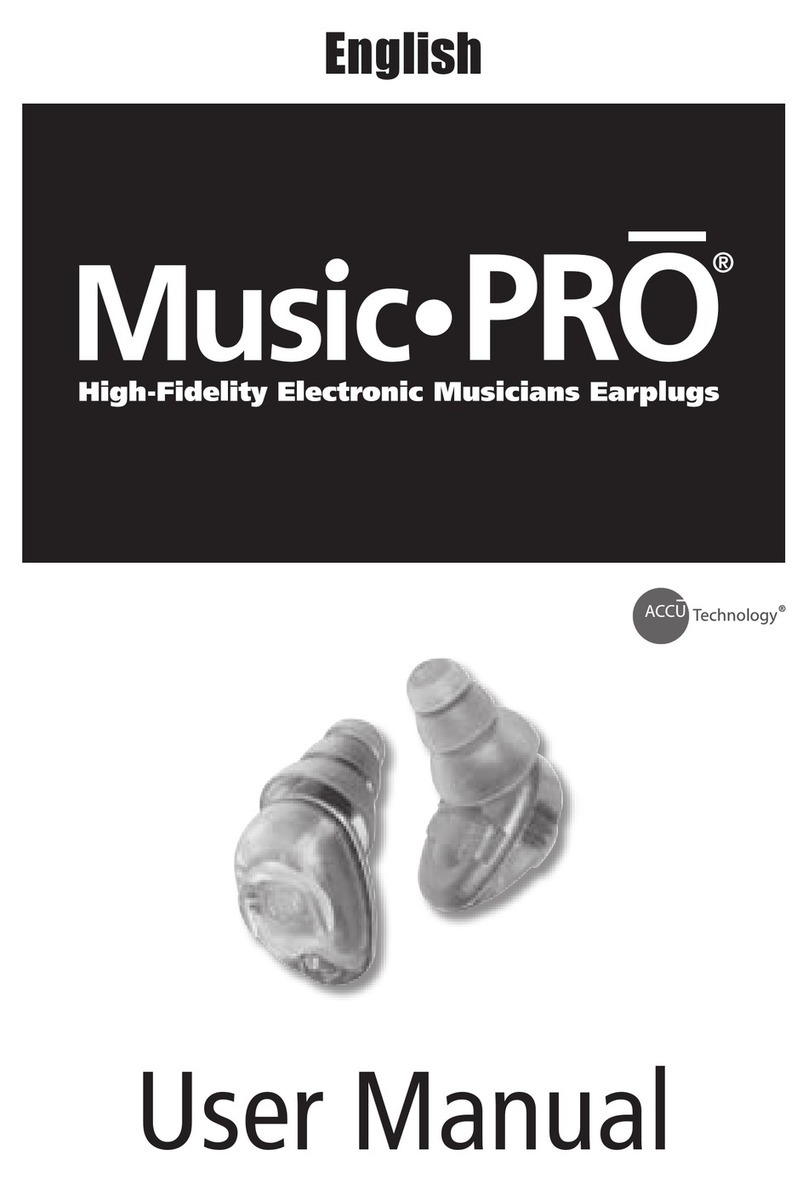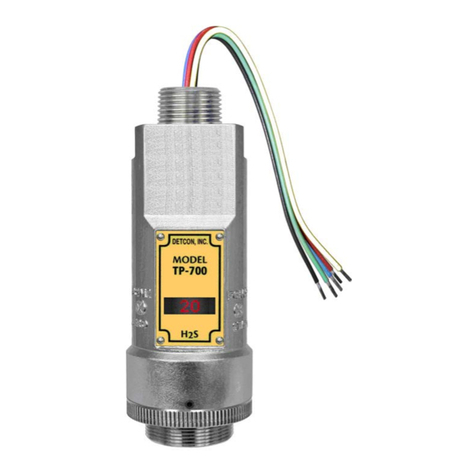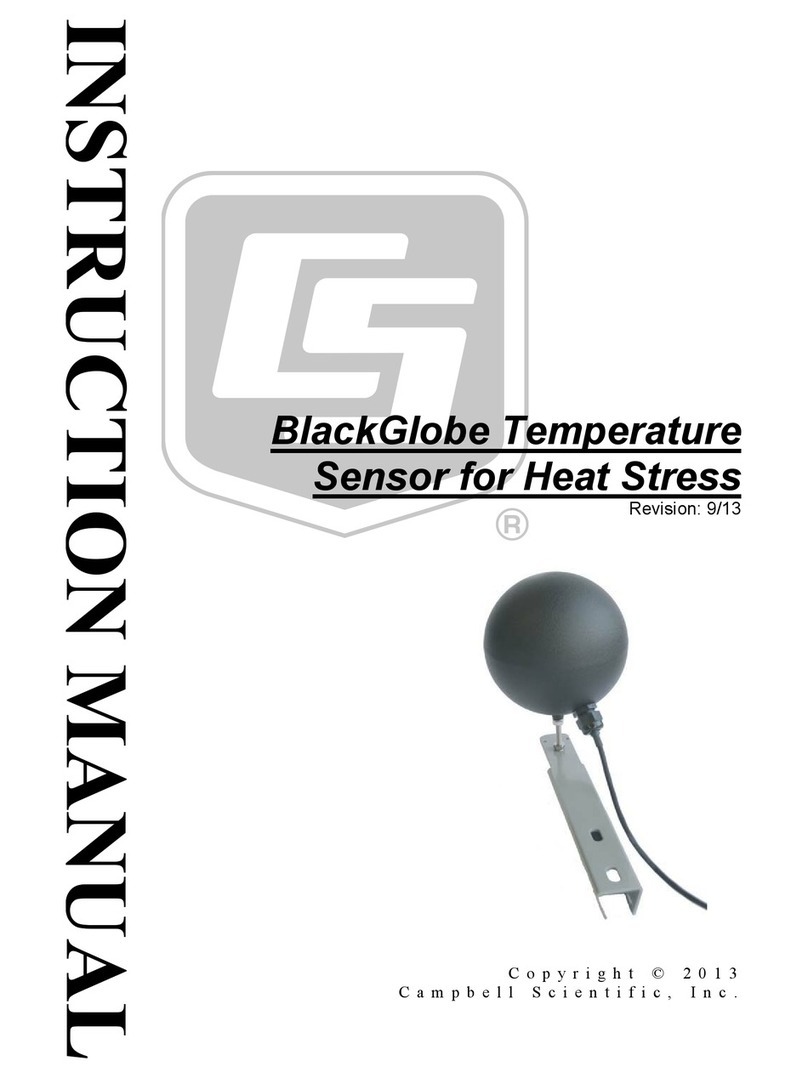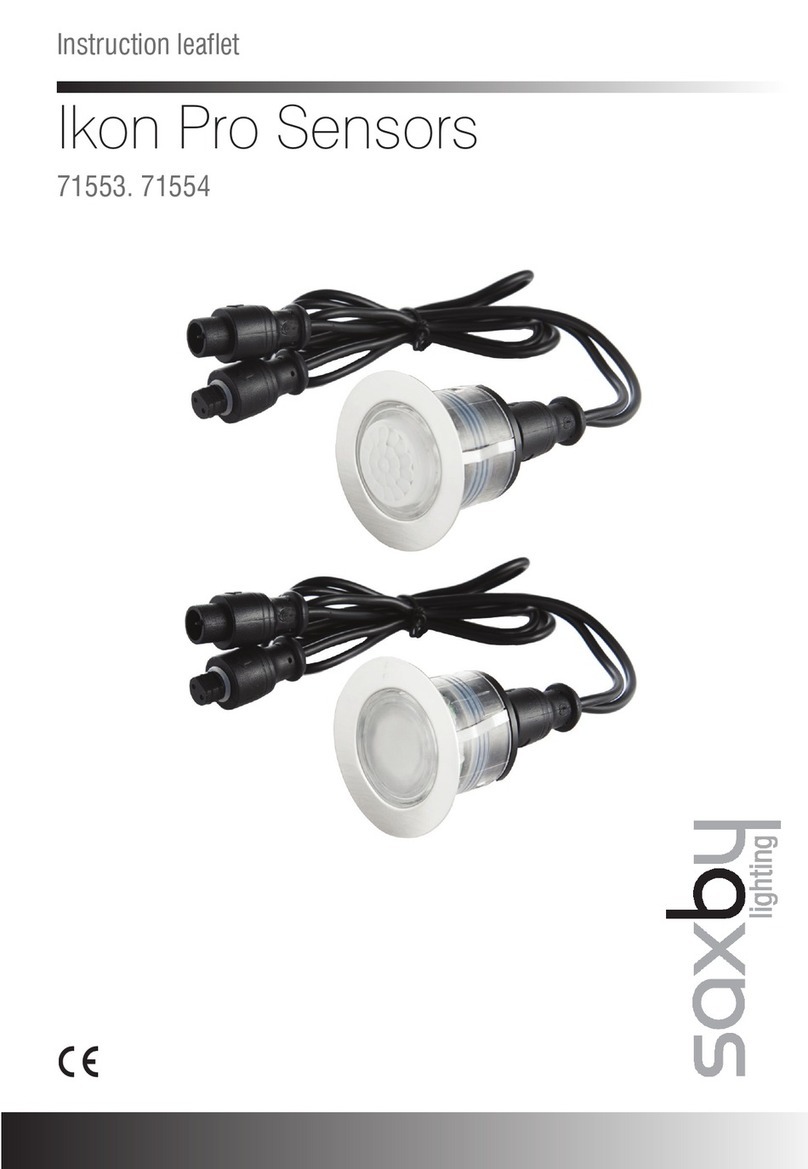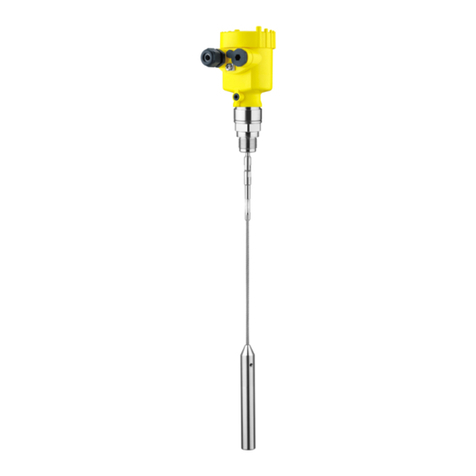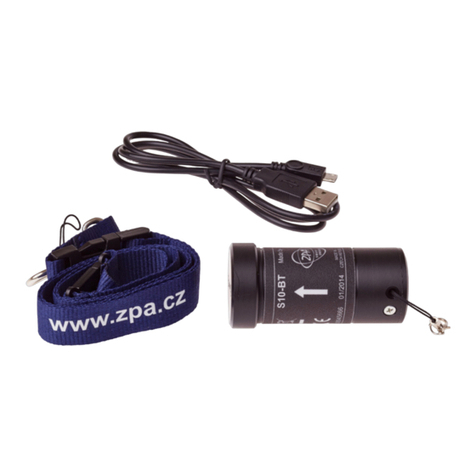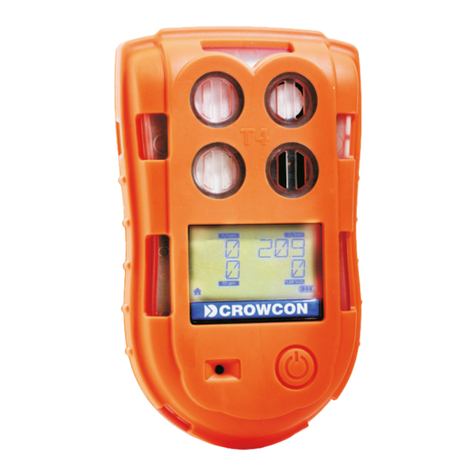CrustBuster BeltVeyor Honeycomb User manual

BeltVeyor
16" Honeycomb / Crescent
Owner's Manual
04149100 2012

Table of Contents
Warranty Information . . . Inside Front Cover
Operator Qualifications . . . . . . . . . . . . . . . . 1
Safety ........................... 2-4
DecalLocations .....................5
Maintenance ...................... 6-8
Troubleshooting Guide . . . . . . . . . . . . . . . . 9
Dimensions & Diagrams . . . . . . . . . . . 10-12
Accessories .................... 13-14
RepairParts .................... 15-18
20' Beltveyor
Specifications ....................19
Electric Unit . . . . . . . . . . . . . . . . . . 20-25
Hydraulic Unit . . . . . . . . . . . . . . . . . 26-31
30' Beltveyor
Specifications ....................33
Electric Unit . . . . . . . . . . . . . . . . . . 34-39
Hydraulic Unit . . . . . . . . . . . . . . . . . 40-45
40' Beltveyor
Specifications . . . . . . . . . . . . . . . . . . . . 47
Electric Unit . . . . . . . . . . . . . . . . . . 48-53
PTO Unit . . . . . . . . . . . . . . . . . . . . . 54-59
Hydraulic Unit . . . . . . . . . . . . . . . . . 60-65
50' Beltveyor
Specifications . . . . . . . . . . . . . . . . . . . . 67
Electric Unit . . . . . . . . . . . . . . . . . . 68-73
PTO Unit . . . . . . . . . . . . . . . . . . . . . 74-79
70' Beltveyor
Specifications . . . . . . . . . . . . . . . . . . . . 81
Electric Unit . . . . . . . . . . . . . . . . . . 82-87
PTO Unit . . . . . . . . . . . . . . . . . . . . . 88-93
Warranty
CrustBuster/Speed King, Inc. of Dodge City, Kansas, warrants consumer products, so far as
the same is of our own manufacture, against defects in material and workmanship under
normal and reasonable use for a period of one (1) year after date of delivery to the original
purchaser. Our obligation under this warranty is limited, however, to furnishing a replacement
part for a defective part, or at our option to repair the defective parts without charge, either
method F.O.B. our works, provided the consumer gives CrustBuster/Speed King,Inc. written
notice within ten (10) days after said part appears to be defective and affords
CrustBuster/Speed King,Inc. an opportunity to inspect. Unless otherwise expressly agreed
to by CrustBuster/Speed King,Inc., the consumer shall bear the expense of installation.
CrustBuster/Speed King, Inc. will not be liable for consequential damages where the loss is
commercial, including but not limited to loss of profit, delays or expenses.
This warranty sets forth the extent of our liability. The foregoing is in lieu of all other
warranties, expressed or implied, including any warranties that extend beyond the description
of the product.

1
Operator Qualifications
Operation of this BeltVeyor shall be limited to competent and experienced persons. In addition, anyone
who will operate or work around BeltVeyor must use good common sense. In order to be qualified, he
or she must also know and meet all other requirements, such as:
1. Some regulations specify that no one under the age of 16 may operate power
machinery. It is your responsibility to know what these regulations are in your
area or situation.
2. Current OSHA regulations state in part: "At the time of initial assignment and at
least annually thereafter the employer shall instruct EVERY employee in the
safe operation of servicing of all equipment with which the employer is, or will
be involved."
3. Unqualified persons are to STAY OUT of the work area.
4. A person who has not read and understood all operating and safety instructions
is not qualified to operate the machinery.
FAILURE TO READ THIS BELTVEYOR MANUAL AND ITS
SAFETY INSTRUCTIONS IS A MISUSE OF THE EQUIPMENT.
Sign Off Sheet
As a requirement of OSHA, it is necessary for the employer to train the employee in the safe operation
and safety procedures with this BeltVeyor. We include this sign off sheet for your convenience and
personal record keeping.
DATE EMPLOYER EMPLOYER'S SIGNATURE

2
BE ALERT!
Your Safety is involved.
General Safety Statement
WATCH FOR THIS SYMBOL. IT POINTS OUT IMPORTANT
SAFETY PRECAUTIONS. IT MEANS "ATTENTION
)
))
)))
))))
))
BECOME
ALERT!"
YOUR SAFETY IS INVOLVED.
It is your responsibility as an owner, operator, or supervisor to know and instruct everyone
using this BeltVeyor at the time of initial assignment and at least annually thereafter, of the
proper operation, precautions, and work hazards which exist in the operation of this BeltVeyor
in accordance with OSHA Regulations.
Safety Is No Accident
The following safety instructions, combined with common sense, will save your equipment
from needless damage and the operator from unnecessary exposure to personal hazard. Pay
special attention to the caution notes in the text. Review this manual at least once each year
with new and/or experienced operators.
1. Read and understand the operator's manual before operating this BeltVeyor.
Failure to do so is considered a misuse of the equipment.
2. Make sure BeltVeyor is secure before operating.
3. Always keep children away from BeltVeyor when operating.
4. The motor controls and reset button must be located so that the operator has
a full view of the entire operation.
5. During regular operation of the BeltVeyor, one person should be in a position
to monitor the operation. A second person should always be nearby to
shutdown the BeltVeyor in case of an emergency.
6. Make sure everyone that is not directly involved with the operation is out of
the work area before beginning the operation.
7. Keep the work area clear of grease, oil, water, and other objects that could
cause a slip or a fall.

3
8. Make sure all safety devices, shields, and guards are in place and are
functional before beginning the operation.
9. Shut off power to adjust, service, or clean the BeltVeyor.
10. Keep hands, feet, and clothing away from moving parts. It is a good idea to
remove all jewelry before starting the operation.
11. Visually inspect the BeltVeyor periodically during operation for signs of
excessive vibration, loose fasteners, and unusual noises.
Electric Safety
1. Electric motors and controls should be wired by a qualified electrician and
meet all standards set by Federal, State, and Local Electrical Codes.
2. Make certain electric motors are grounded.
3. A magnetic starter should be used to protect your motor.
4. Your motor must have a manual reset button.
5. Electrical power must be disconnected before resetting your motor.
6. A main power disconnect switch, with the ability to be locked in the off
position, should be provided. The switch should be locked in the off position
whenever work is to be done on the BeltVeyor or the BeltVeyor is going to
be left unattended.
7. Disconnect power before resetting motor overload.
CAUTION
1. Read and understand instruction manual before operating.
2. Keep all safety shields and devices in place.
3. Make certain everyone is clear before operating machine.
4. Keep hands, feet, and clothing away from moving parts.
5. Shut off power to adjust, service, or clean.
6. Make sure machine is secured before operating.
7. Disconnect power before resetting motor overload.
8. Make certain electric motors are grounded.

4
Safety Decals
REMEMBER: If Safety signs have been damaged, removed, become illegible or parts replaced without
decals, new decals must be applied. New decals are available from your authorized
distributor or factory. Individual decals shown below.
#05373600 #608000
#608018 #05374400
#05375100

5
Decal Locations
Item Qty Part No. Description
1 1 05373600 Caution 12 points
2 1 04155800 Belt Spring Compression
3 1 606335 Belt Training
4 1 05374400 Danger Rotating Drive Line
5 1 608018 Warning High Pressure Fluid
6 1 608000 Electrocution Hazard
7 1 05375100 Danger -Intake
8 2 01114800 Speed King
#606335

6
Pre-Operation Check List
1. Check all bearings for proper lubrication.
2. Check the tube for foreign material.
3. Check all belts for proper tension.
4. Start unit and check conveyor belt alignment while unit is empty.
BELT CARE ………
It is suggested that the unit be run every two to three days or more often if possible. This tends to
keep the conveyor belt alive and stops any forming of the belt to the curvature of the tube while the
unit is not in use.
NOTE: Belt may deteriorate if not in use and exposed to weather conditions for any prolonged
period of time.
Operation Sequence
1. Check wheels to prevent movement during operation.
2. Check all drive belts for proper tension.
3. Make sure conveyor belt is properly tensioned.
4. Allow unit to run empty for a few minutes to flex conveyor belt.
5. Check conveyor belt for proper alignment.
6. Charge conveyor unit as evenly as possible. DO NOT bury intake end in material.
7. Before shutting power off, be certain unit is empty.
PTO DRIVE OPERATION ………
While operating, keep PTO shaft as straight as possible. Prolonged operation with the PTO
shaft at an angle in excess of 15 degrees will reduce U-joint life. DO NOT extend PTO shaft
beyond 80" end to end.
OPERATION WITH ACCESSORIES ………
If the BeltVeyor is used with a self-powered undercar conveyor, start the BeltVeyor first and
the undercar conveyor second. Reverse this procedure for shutdown.
TOWING ………
The BeltVeyor tubular conveyor is designed for maximum portability. Observe the following
towing instructions for both safety and care of the unit.
1. Lower the unit to the extreme down position with slight tension on the cable.
2. Deflate tires to approximately 22 pounds.
3. Make certain the hitch is secure.
4. Be sure to follow normal towing safety precautions.
STORAGE ………
Temporary Storage
1. Relieve tension from all belts; both v-belts and conveyor belt.
2. Store all belt equipment in a dry place. If equipment cannot be stored out of the weather,
cover electrical and mechanical parts with waterproof material.
Prolonged Storage
1. Remove all belts and store in a cool, dark, dry place.
2. Wash conveyor belt thoroughly.
3. Wash conveyor tube both inside and out.
4. Lubricate all bearings.
5. Lower unit to the extreme down position with slight tension on the winch cable.
6. Store all equipment in a dry shelter.

7
Maintenance
Preventive maintenance is the key to the long life of any mechanical device.
Careful and systematic inspection of all BeltVeyor equipment will result in maximum, trouble-free
service.
BELT REPLACEMENT ………
To replace the belt, cut it into and hand rotate the drive pulley until belt has been removed. Install
appropriate belt as outlined in assembly instructions. Refer to page 12.
DRIVE ASSEMBLY TAKE-UP ………
After extended use, the conveyor belt may stretch to the point that there is not sufficient take-up
in the drive assembly to tighten it. Obtain additional take-up by cutting a 6" to 8" section from belt.
A new splice lacing may be ordered from your CrustBuster/Speed King distributor or the factory.
PERIODIC CLEAN-OUT ………
Due to the characteristics of certain materials, residue sometimes collects between the conveyor
belt and the tube. Check the unit periodically for any material build up in this area. If residue
appears excessive, remove the conveyor belt and thoroughly wash the belt and tube. Allow belt
and tube to dry before reinstalling the belt.
When conveyor is not being used, secure belt to the tube to prevent belt from flopping in the wind,
possibly breaking return idlers or ripping belt.
LUBRICATION ………
All bearings which are fitted with grease zerks should be lubricated at the conclusion of each
operating day. Before greasing bearings, make certain the zerks are free of dirt, otherwise this will
be passed into the bearing race. If unit will be out of service for a period of time, purge bearings.
Electric motor should be oiled in accordance with the manufacturers recommendations.
Roller chains should be oiled with a light weight oil at the conclusion of each days' operation.
Keep PTO shaft and tube well greased so they move freely.
CONVEYOR BELT TRAINING PROCEDURE ………
A conveyor belt correctly installed and trained will run straight and true. The belt must run centered
on all terminal pulleys, take-up pulleys, and return idlers throughout the entire belt length.
Incorrect installation and training can result in severe edge damage, material spillage, material
leakage through the skirt rubber at the loading point, and excessive power demands. Material
spillage is the usual reason for belt carcass ruptures and pulley cover gouging and stripping, while
leakage at the skirt rubber results in excessive conveyor cover wear under the skirts.
ALIGNMENT ………
All rotating parts -head pulleys, tail pulleys, take-up pulleys, and return idlers- must be at a 90
degree angle to the direction of belt travel, must be level, and the midpoint of each centered on a
line when properly aligned.
Alignment is checked by running a tight wire from center of the head pulley to center of tail pulley.
Center all other rotating parts on the wire.
Level all rotating parts. If a part is not level, the belt will run to the lower side.
Check that all parts are at a 90°or right angle to the wire. If a part is not at 90°to the center line,
the belt will run to the side that if first contacts.
BELT SPLICING ………
A conveyor belt must not run out at the splice area. Runout will occur if the splice is not in
alignment or correctly made.
SKIRTING & BRUSH………
Maintain skirtboards and brush to prevent spillage of grain.

8
Maintenance
BELT TENSIONING ………
Proper belt tension is achieved when the compression springs are compressed 1" to 1 1/8".
No compression Optimal compression
BELT TRAINING ………
It is essential that the belt be properly trained at all times. For this reason, all rotating parts should
always be at right angles to the tender belt.
Slight adjustment of head roller shaft may be required to keep belts centered on them i.e., if the
belt runs to one side of the roller - apply more tension to this side of the belt by advancing the roller
shaft on this side.
A belt correctly installed will usually train well both empty and loaded, except as noted:
1. One or more rotating parts not in alignment.
2. Belt tensions in some part of system (usually at tail section) are below minimum
recommended.
3. Belt not loaded centrally.
When a belt is initially started, it should be jogged around the system to determine if a major runout
occurs which could damage belt and belt edges.
After the belt is trained empty, the belt should be trained with a load. The take-up adjustments are
made to prevent belt slip and keep tensions at all points above minimums recommended when belt
is operating with a load.
If slip occurs under load, additional belt tension should be applied by adjusting the take-up only
enough to prevent slip from occurring under load, and when started with a load. After additional
tension is added, the alignment should be checked again and adjusted accordingly.

9
Troubleshooting
If the BeltVeyor equipment malfunctions, the source of faulty operation may frequently be found by
observing the nature of the fault and applying some simple checks and remedies to correct the
malfunction. The following troubleshooting table is provided for this purpose.
BELTVEYOR TROUBLESHOOTING GUIDE
TROUBLE POSSIBLE CAUSES REMEDY
1. Conveyor belt not
running at
operational RPM.
<
<
<
<
<
<
<
<
Engine or motor not developing
operational RPM.
Loose v-belts.
Foreign matter on conveyor belts or
pulleys.
Conveyor belt not tensioned properly.
Lagging worn off of drive pulleys.
Material build up around intake end of
tube.
Is belt upside down?
Frozen bearings.
Correct power source problem.
Adjust v-belt tension.
Clean belt and/or pulleys.
Tighten conveyor belt.
Replace lagging or pulleys.
Clean area under intake.
Make certain smooth side of belt is
running against tube. If not, turn belt
over.
Replace or lubricate bearings.
2. Normal capacity
cannot be obtained.
<
<
<
<
<
<
<
<
<
Engine or motor not developing
operational RPM.
Loose v-belts.
Foreign matter on conveyor belts or
pulleys.
Conveyor belt not tensioned properly.
Lagging worn off of drive pulleys.
Material build up around intake end of
tube.
Is belt upside down?
Frozen bearings.
Conveyor belt not tight.
Correct power source problem.
Adjust v-belt tension.
Clean belt and/or pulleys.
Tighten conveyor belt.
Replace lagging or pulleys.
Clean area under intake.
Make certain smooth side of belt is
running against tube. If not, turn belt
over.
Replace or lubricate bearings.
Tighten conveyor belt.
3. Belt alignment on
bottom pulley.
<
<
<
Pulleys, idlers, or drive assembly
improperly aligned.
Possible build up on belts or pulleys.
Drive assembly improperly aligned.
Adjust pulley and idler alignment. Drive
assembly should be level with head
and tail frame.
Clean belt and/or pulleys.
Align and level drive assembly with
head and tail frame.
4. Excessive wear of
lagging or pulleys.
<
<Conveyor belt not properly tensioned.
Take-up idlers excessively uneven.
Tighten conveyor belt.
Adjust take-up idlers evenly.
5. Pulley drags or does
not turn.
<Frozen bearings. Lubricate or replace bearings.
6. Material build up in
tube.
<Loose belt or worn out material guides. Tension belt and clean tube. If material
guides are excessively worn, replace.

10
Dimensions

11
Winch Wrap Diagram
20' - 30'
Cable Mount Diagram
40'-50'-70'

12
Belt Wrap & Assembly
1. Remove pan sides and bottom from tail end.
2. Using belt puller, feed belt through conveyor as shown.
Hand feed belt from tail end toward other end of belt.
3. Clamp belt stretcher plates on ends of belt, leaving 2 to
3 feet between stretcher plates. Plates should be bolted
tight enough to avoid belt slipping.
4. Use a device (for example- come-along) to pull belt
ends together.
5. Insert cable through belt splice.

13
BeltVeyor Accessories
Bolt-on Spindle - 70'
#62115100
Item Qty Part No. Description
1 1 551242 Hub 6 Bolt Complete
2 1 81754400 B o l t - o n S p i n d l e
Weldment
3 2 331421 U-bolt 3/4" x 4" x 6"
4 4 330332 Lock washer 3/4"
5 4 330290 Hex nut 3/4"
90°Spindle -20'-30'-40'-50'
#60353000
Item Qty Part No. Description
1 2 83261800 Swivel Axle Weldment 90°
2 1 83260000 Attachment Bracket Rt.
1 83259200 Attachment Bracket Lt.
3 2 16125710 Connecting Ear
4 2 16310500 Spacer 1 1/2" x 1"
90°Fixed Axle -20'-30'-40'-50'
#60847100
Item Qty Part No. Description
1 1 80807100 90°Fixed Axle
2 2 13928700 Attachment Bracket
3 4 335240 HHCS ½" x 1 3/4"
4 4 330159 Flat Washer ½"
5 4 331363 Hex Nylock Nut ½"
Item Qty Part No. Description
6 2 551242 Hub W719 Complete
Includes #7-15)
7 05702600 Seal
8 03040300 Inner Bearing
9 05707500 5-Bolt Hub
10 01580000 Wheel Nut ½-20"
11 05741400 Outer Bearing
12 02080000 Spindle & Hub Washer
13 01581800 Wheel Nut 7/8-14"
14 02154300 Cotter Pin 5/32" x 1 3/4"
15 05703400 Wheel Dust Cap

14
BeltVeyor Accessories
90°Swivel Axle -20'-30'-40'-50'
#62228200
Item Qty Part No. Description
1 1 81846800 90°Swivel Axle
2 2 81845000 90°Swivel Axle Spindle
3 2 337352 Handle Nut ½" x 4½"
4 2 334300 HHCS ½" x 3½"
5 4 334789 HHCS 1" x 3½"
6 4 330597 Hex Nylock Nut 1"
7 2 551242 Hub W719 Complete
Includes #8-16)
8 05702600 Seal
9 03040300 Inner Bearing
10 05707500 5-Bolt Hub
11 01580000 Wheel Nut ½-20"
12 05741400 Outer Bearing
13 02080000 Spindle & Hub Washer
14 01581800 Wheel Nut 7/8-14"
15 02154300 Cotter Pin 5/32" x 1
16 05703400 Wheel Dust Cap
Steel Hopper - All units
#63099600
Item Qty Part No. Description
1 1 30219000 Hopper Side Left
2 1 30220800 Hopper Side Right
3 1 30216600 Hopper End
4 1 30217400 Belt Plate
5 1 62978200 Brush Assembly
6 22 01057900 HHCS 1/4 x 3/4
7 22 330522 Nylock 1/4
Belt Puller Kit
#63122600
Belt Stretcher Kit
#63123400

15
BeltVeyor Repair Parts
Flex Hopper - All Units
#62997200
Item Qty Part No. Description
1 1 62996400 Spring Mount Assembly
2 1 82778200 Hopper Arm
3 1 04070900 Canvas
4 1 30310700 Hopper Side Left
5 1 30311500 Hopper Side Right
6 1 30312300 Back up Strap
7 1 30309900 Hopper Back
8 1 30217400 Belt Plate
9 1 62978200 Brush Assembly
10 16 01057900 HHCS 1/4 x 3/4
11 16 330522 Nylock 1/4
Tail Assembly - All Units
#62951900
Item Qty Part No. Description
1 1 82707100 Tail
2 2 82790700 Take-up Bracket
3 2 03103900 Bearing 1½" 2 Bolt Flange
4 4 01137900 Carriage Bolt ½" x 2½"
5 4 331363 Nylock ½"
6 2 01370600 Square Nut 3/4-10
7 8 01017300 HHCS 3/8 x 1
8 1 62952700 Lagged Roller 6"
9 1 82721200 Door Mount
10 2 04132700 HHCS 3/8 x 2 3/4
11 12 330837 Nylock 3/8
12 2 15101900 Take-up Guide
13 2 334847 Wing Nut 3/8
14 2 82743600 Take-up Bolt 3/4 x 19 1/4
15 4 02176600 Flat Washer 3/4 SAE
16 2 04150910 Compression Spring
17 1 82722000 Jack Rotation Plate
18 2 02306900 HHCS 3/4 x 1 1/4
19 2 330332 Lock Washer 3/4

16
BeltVeyor Repair Parts
Head Assembly - 8" Roller
#63087100
Item Qty Part No. Description
1 1 82744400 Head -8" Roller
2 1 62979000 Lagged Roller 8"
3 2 82761800 8" Roller Cap
4 2 30316400 Bearing Plate
5 2 80661200 Take-up Bolt ½" x 4½”
6 4 330134 Hex Nut ½"
7 2 03103900 Bearing 1½” 2bolt flange
8 4 01140300 Carriage Bolt ½" x 2
9 4 331363 Nylock ½"
10 2 20072500 Key 3/8 x 2
Head Assembly - 10" Roller
#63086300
Item Qty Part No. Description
1 1 82723800 Head -10" Roller
2 1 62959200 Lagged Roller 10"
3 2 82772500 10" Roller Cap
4 2 30316400 Bearing Plate
5 2 80661200 Take-up Bolt ½" x 4½”
6 4 330134 Hex Nut ½"
7 2 03103900 Bearing 1½” 2bolt flange
8 4 01140300 Carriage Bolt ½" x 2
9 4 331363 Nylock ½"
10 2 20072500 Key 3/8 x 2

17
BeltVeyor Repair Parts
Tubes
10" Half Band
#10319210

18
BeltVeyor Repair Parts
Hydraulic Cylinders
#02858900 - 40' Unit
3 x 30 -1 1/4" Rod
Item Part No. Description
1 461483 Clevis
2 460824 Rod
3 469726 Head
4 460964 Piston
5 461004 Tube
6 469718 Base
7 461053 Tie Rod
8 463133 Clevis Pin
9 463133 Clevis Pin
10 460329 Wiper (Rod)
11 463109 O-Ring (Rod)
12 463042 Back-up (Rod)
13 460923 O-Ring (Piston)
14 460980 Back-up (Piston)
15 460394 Nut (Piston)
16 460972 Nut (Rod)
17 460691 Nut (Clevis)
18 460477 Capscrew
19 460469 Clip Pin
461079 Seal Kit
#466953 - 50' Unit
4 x 48 -2" Rod
Item Part No. Description
1 --------- Clevis
2 466979 Rod
3 461152 Head
4 461269 Piston
5 466987 Tube
6 461368 Base
7 466995 Tie Rod
8 463133 Clevis Pin
9 463133 Clevis Pin
10 461160 Wiper (Rod)
11 461178 O-Ring (Rod)
12 463075 Back-up (Rod)
13 461186 O-Ring (Piston)
14 461277 Back-up (Piston)
15 461285 Nut (Piston)
16 461442 Nut (Rod)
17 460691 Nut (Clevis)
18 460477 Capscrew
19 460469 Clip Pin
461848 Seal Kit
#474049 - 70' Unit
5 x 60 -2½" Rod
This manual suits for next models
1
